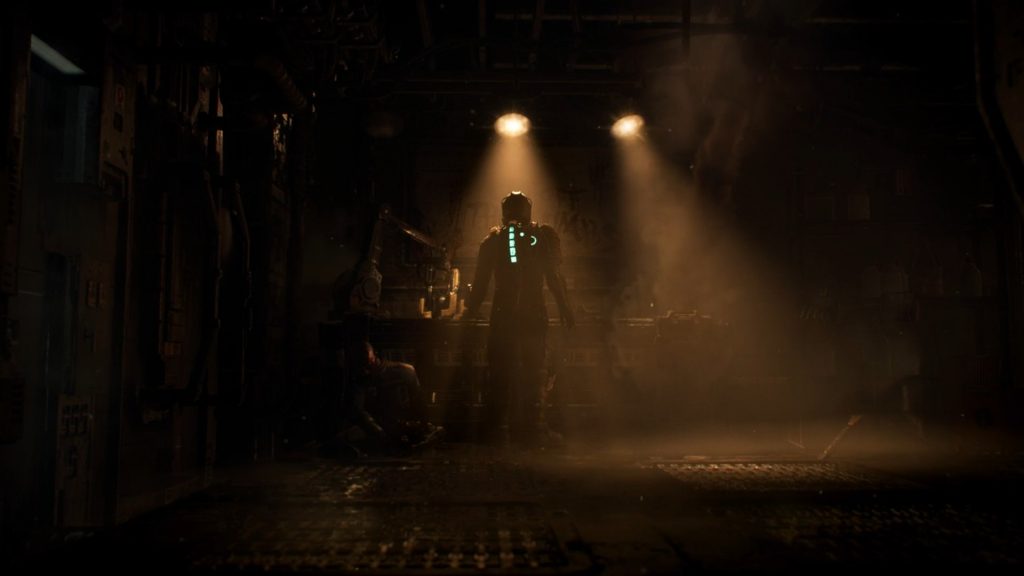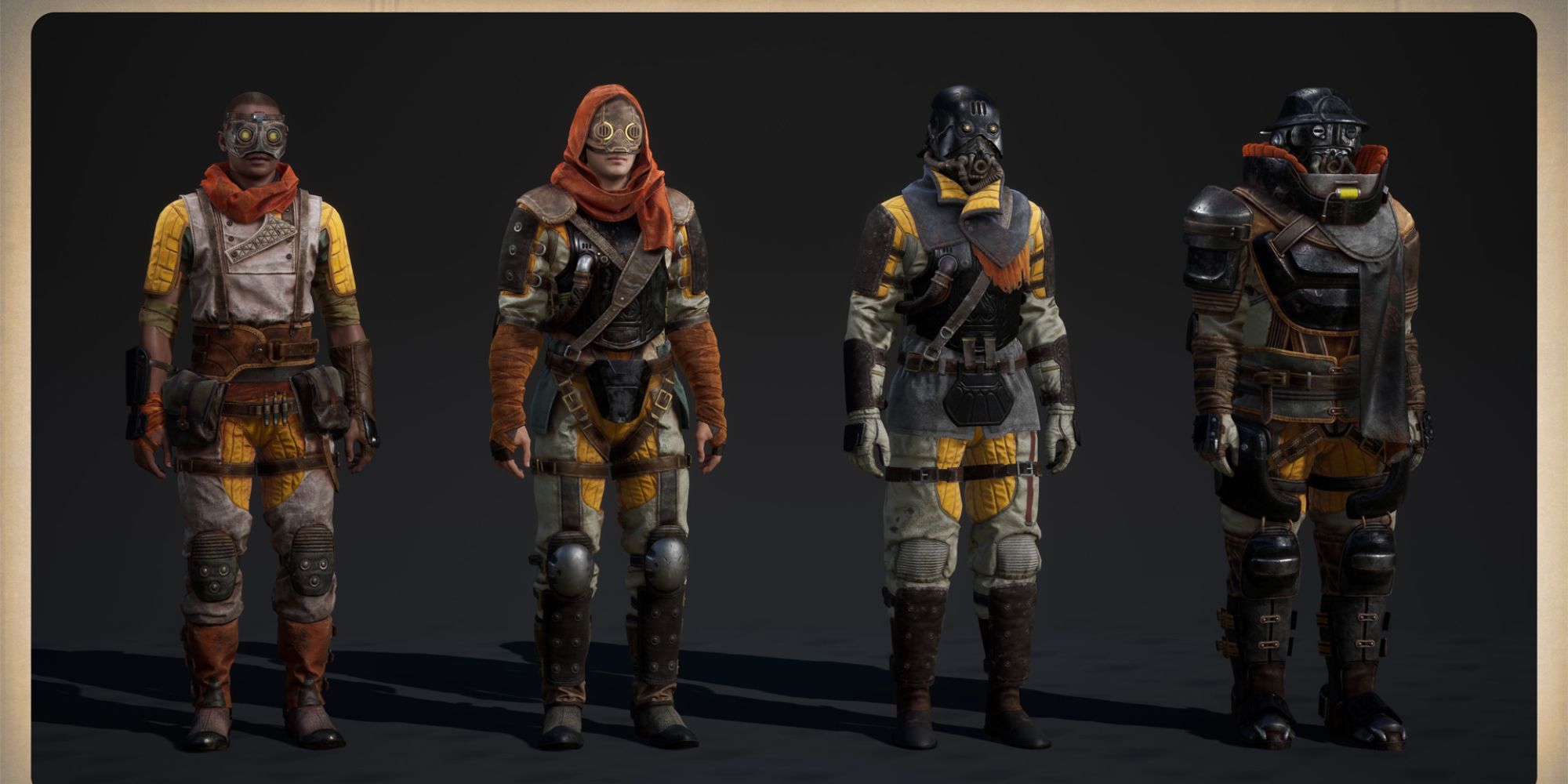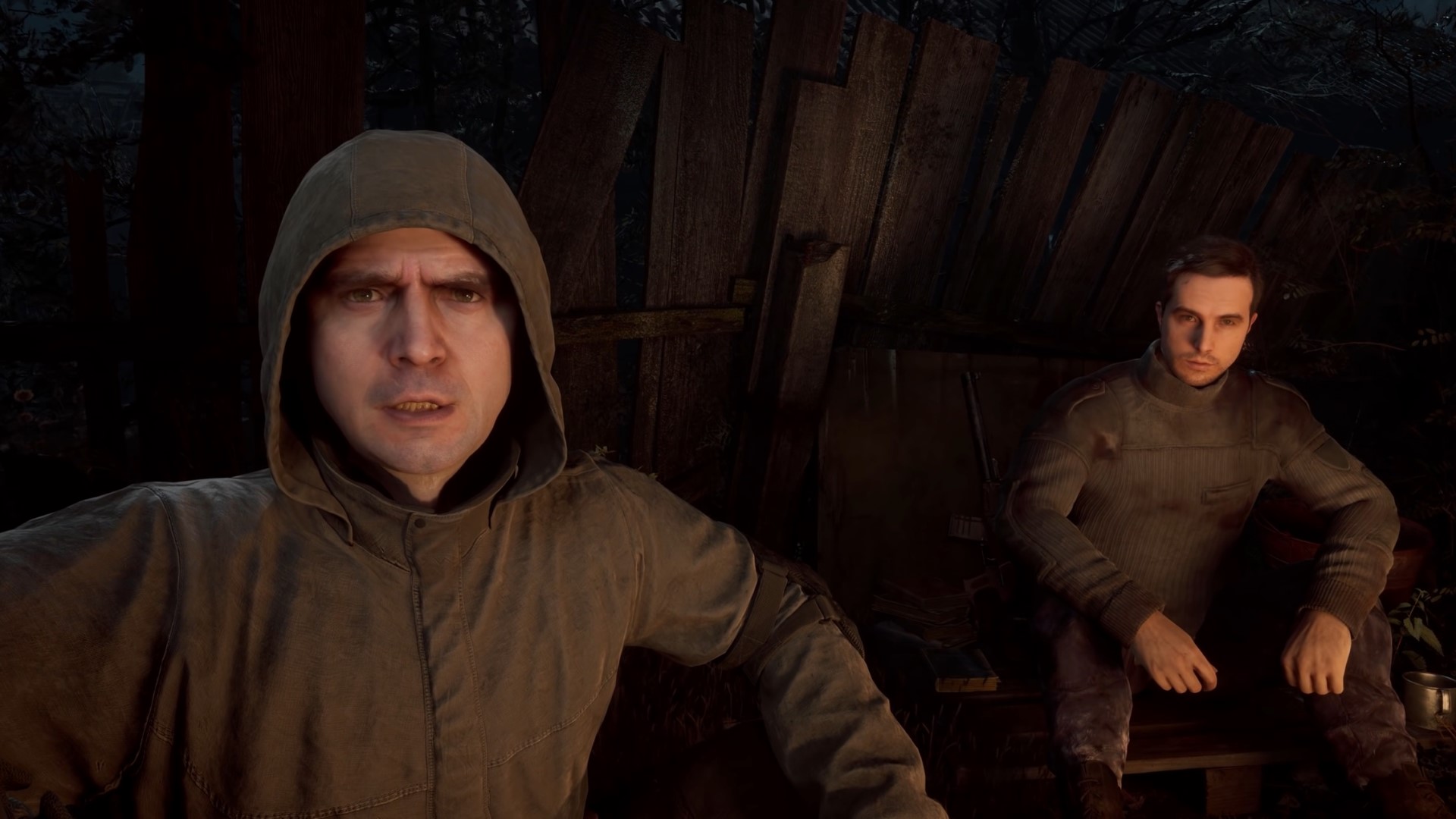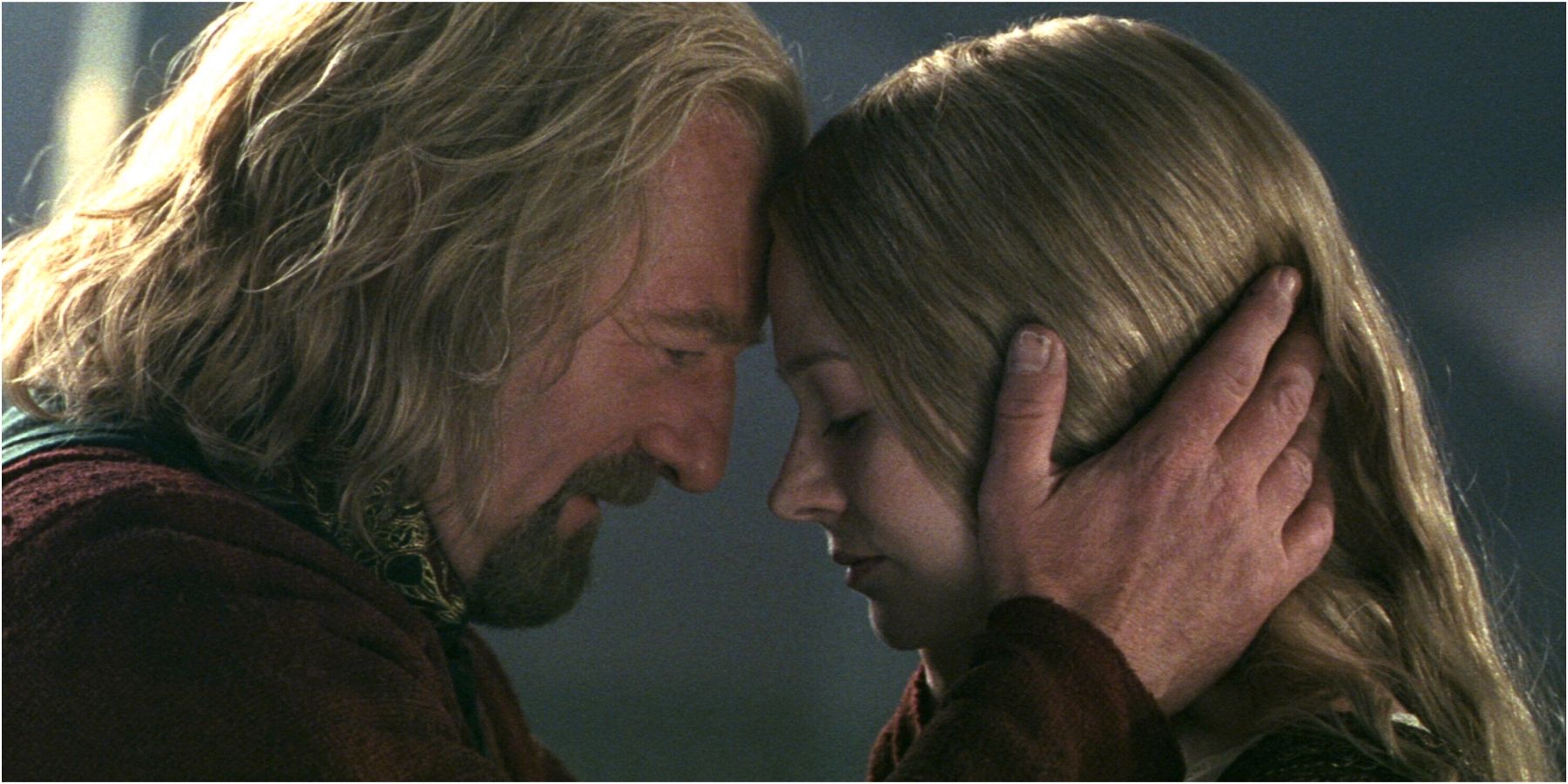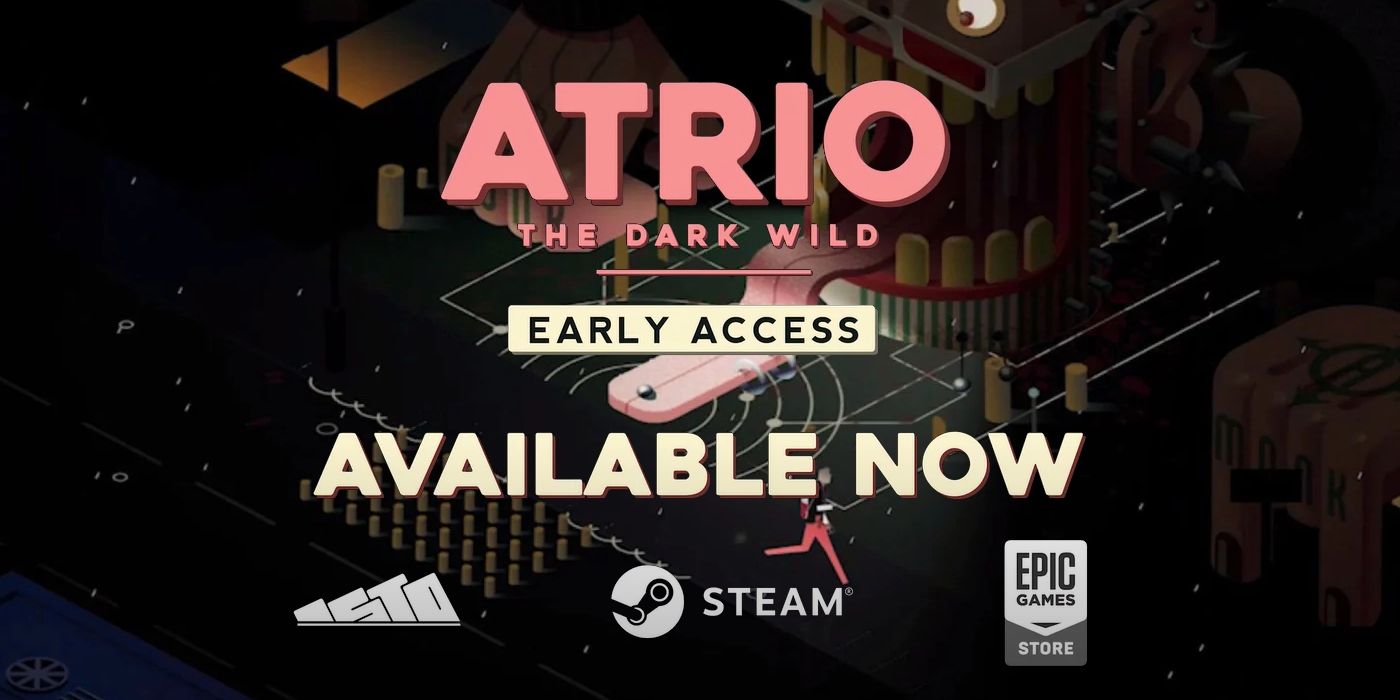

After three and a half years of development, Atrio: The Dark Wild released in early access on August 10. The game is an ambitious blend of cyberpunk, horror, automation, survival, and some really cute piston-dogs. It takes mechanical cues from Don't Starve and Factorio in some ways, but its visual components really make it stand out among other survival and automation games. While the story is still in production, like much of the game, there is still a lot of content available for players to enjoy in its early access incarnation.
Atrio: The Dark Wild's much-anticipated early access launch comes after three years of YouTube presence for the game. In that that time, developers Isto Inc garnered over 1.5 million views, a third of those concentrated on the game's first update video. Alongside these updates is a healthy dose of humor and ridicule, pointed at the game, its fans, and development itself. The star of these videos is usually designer Stephen Huang, who sat down with Game Rant to discuss YouTube as an advertising platform, how the game's horror evolved spontaneously, and the "yoink and twist" method of making game art. The interview has been edited for clarity and brevity.
RELATED: Atrio: The Dark Wild Dev Breaks Down How YouTube Saved The Game
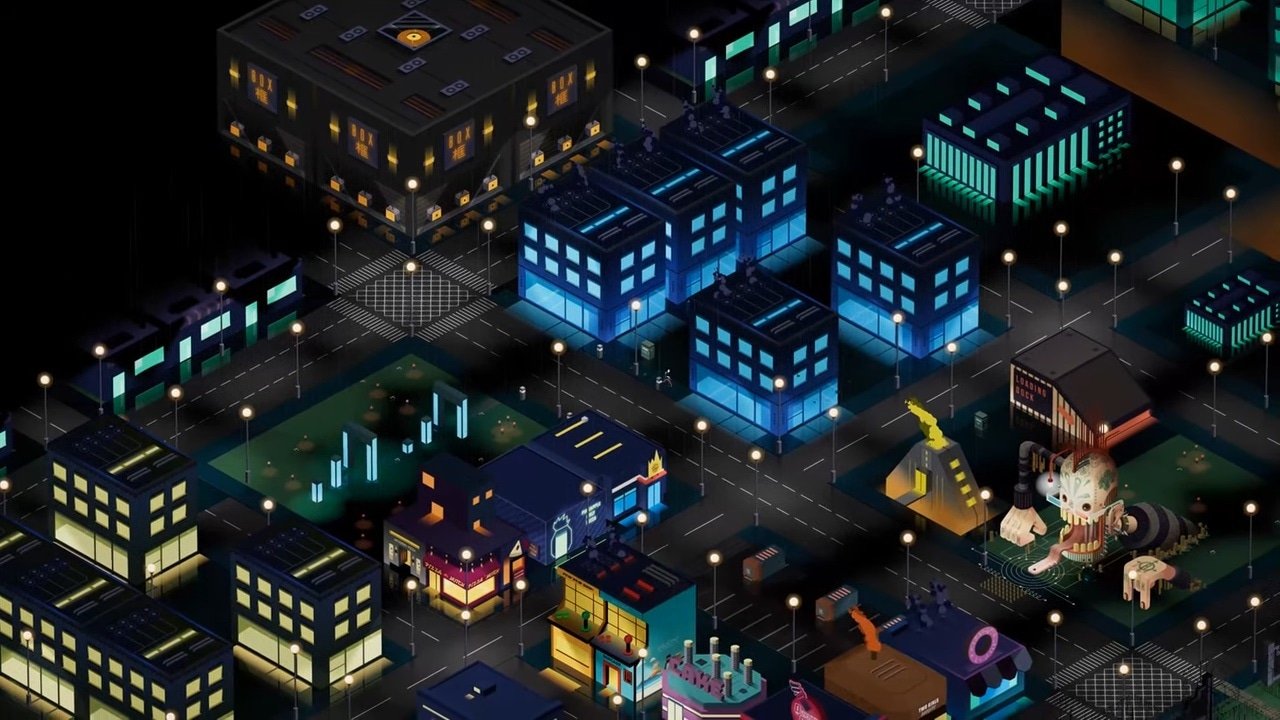
Q: What are you most excited for with Atrio’s early access release on August 10?
A: The biggest thing is actually getting the game to players. It’s been three and a half years of development, so it’s been really exciting (and nerve wracking) to see that. However, a lot of them got hands on with our playtest and seemed to enjoy it. It’s a little nerve wracking to release a game that’s unfinished, and you just hope people will understand that our decision is to get them involved in the development process, not just to send it out the door. We’re doing a good job of integrating them into our creation process.
Q: You’ve let gamers have a go on a playtest version of the game, what was the biggest lesson your learnt from that?
A: The biggest lesson is that we have no idea how to play our game. When we got the playtest videos and feedback we were like ‘holy sh*t, what’s going on?’ We built all these systems, and we had some preconceived notions about what the game was and how it was meant to be played. We let other people have their hands on it, and it was like ‘holy moly, you can do things we had no idea about,’ and we spent three and a half years developing it! This is why we went early access; I think we’re going to see some really interesting things from letting the game out early, and that’s a good thing.

Q: What was your favorite way that players broke your game when you gave them even the tiniest window to play about in its space?
A: It’s interesting, there’s a bunch of different systems in the game, and we thought a couple of them were really robust. It turns out: they weren’t. One of these was the gates. Gates move up and down, and we designed them in a modular way. A gate moves on its own and pays attention to the movements of other gates around it, staggering itself accordingly. People went wild with those. The main lesson to take away is ‘never trust the internet with a thing of yours, or they will break it.’
Q: What do you hope to achieve most from the game’s early access?
A: This is kind of a tangent, and it has to do with our YouTube videos. When I started doing it about a year ago, I had never done YouTube, I had never talked in front of a camera, edited, or written a script. The thing that I learned I was the worst at was picking thumbnails and titles. These are the most important pieces of a YouTube video, but there’s so much variation in what you can choose. It took me a long time to realize I had no idea what people wanted.
A: I thought I knew what people wanted, but I had no idea. I think, as a designer, it’s important to humble yourself and say, ‘the only people who can tell me what the people want are the people.’ You can go and create a game, but you can’t know if it works or not unless other people play it. There has to be a fundamental design base, from there, I want the people to feature into the decision-making process. I have been continually humbled during YouTube at every opportunity.
Q: Were you ever worried that adding the creative mode that so many people asked for would undermine the tension in the main survival game?
A: I don’t think so. From what we’ve seen, no one jumps straight into the creative mode. Of course, this makes sense, you don’t pick up a game and go to the sandbox, you want to see what the designers think is the best experience. As long as that experience comes first, then everything else is just gravy. We did a creative mode so people could play around with it on a deeper level and explore the systems we built. It’s hard to be creative when everything is trying to kill you.
RELATED: Tribes of Midgard is as Much About Time Management as Survival

Q: You’ve been very active on YouTube with your Devlogs, what has been your favorite part of interacting with your community in that way, and has it brought a wider community to the game?
A: I think without YouTube, no one would have ever heard of our game. I think YouTube has been the catalyst of all our success. I think the market is so competitive, and this was our first foray into real games. We didn’t know what sells, what was interesting, and if you put the product on its own in a field of incredible products, we would’ve just got lost in the sea. Because we were willing to put ourselves out there and make jokes, we managed to stand out. Our marketing side was really strong, and YouTube had a lower barrier for entry in that regard.
A: In terms of our community, it’s been crazy. It went from us being alone in our room, where you could only harass your friends to playtest for you so many times, it was like ‘dude, I’m not going to play the first hour of your game again.’ So, to say that the community’s involvement was important is almost an understatement. It’s essential to the entire process.
Q: Is demystifying the game development process a big aim for Isto Inc?
A: I’m going to say no, and I’ll tell you why. In the beginning, we definitely did, but as time went on, we realized it’s an incredibly niche market of people who want it to be demystified. These people are typically developers, and they usually already know what it’s like. There’s a very distinct line between game developers and non-game developers – it’s very quick to cross that line and realize exactly what game development is.
A: Rather than demystifying, I would say there’s almost a dishonesty to what we do. We are trying to sell a video, and not show you what the development process is like, because it’s brutal. It’s not fun at all. Well, that’s not true, it’s super fun and I’d never want to do anything else, but you know what I mean. Watching someone getting stuck in your game and coding around bugs for hours is not sexy. That’s the word. I love it, but most of the work is not sexy.
A: We’re just trying to get people excited for game devs. That’s very important in this day and age. Now, I’m not going to name names, but some bigger companies have shown they do not care for their workers very much recently. On the other hand, there’s an opportunity on the indie side of it to present authenticity and a genuine passion that’s not driven purely by monetary gain in a capitalist market where your number one priority is making shareholders happy. It’s nice to be able to show that genuine side and do something about it in a way that’s not through tweets. Because I hate Twitter.
Q: Having worked on Atrio in it for three and a half years, what is your favorite thing about Unity as an engine?
A: We don’t have to build it from scratch. At university we took a games project where we had to build something entirely from scratch. We basically got nothing done, and I worked my ass off. Building a game from scratch is really hard, some people manage it but it’s super tough. It becomes a question of: ‘How many times can I do this in a lifetime?’ It’s like eight years, and that’s so much of your life! I was like, ‘man, I want to get more games done than that, I want to build more stuff!’ In my opinion, I’ll never not use an engine, because life’s too short. Maybe we could build 20 games instead of four.
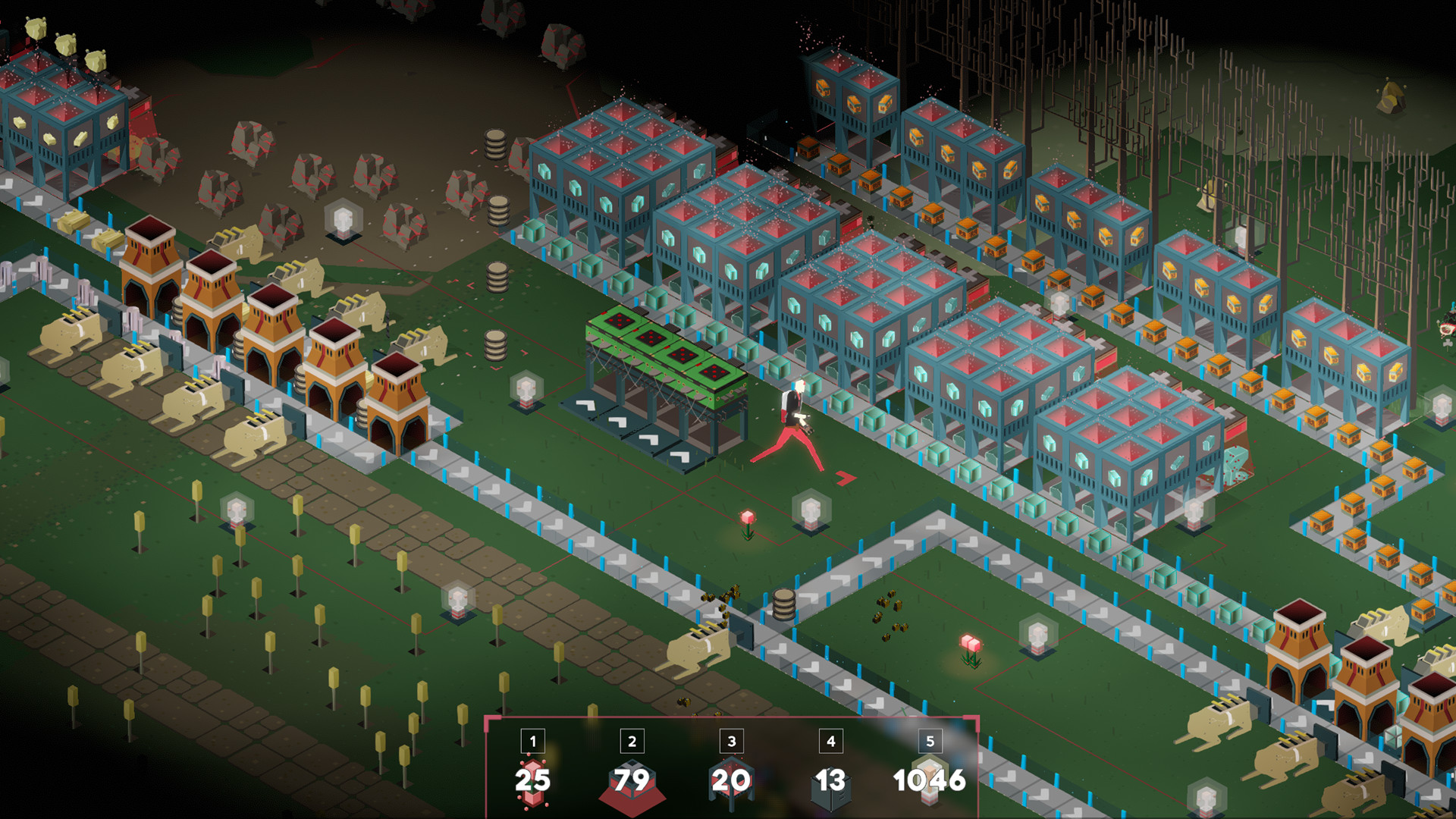
Q: Life’s too short to build an engine, got it. On that note, what’s the biggest limitation of Unity in your opinion?
A: The reality is, when it comes to being a very small team taking their first step, it’s all about thinking ahead and choosing the path of least resistance. Kyle and I had worked on Unity before, and we actually released a little puzzle game onto the App Store called Disjoint. I’m really proud of it, and it has a near perfect five-star rating on the Apple Store.
A: It didn’t sell loads, but it gave us a really good idea of what to do next. It sold enough for us to know ‘alright, let’s do this.’ We had been working with the engine for three years – and there’s something about working with an engine for the first time where you look back on the project and go: ‘Wow. We built this like sh*t. We could go back and do this so much better.’ So, when we finished the project, we knew how we’d go back and build it in Unity. So, from that point on, Unity was a shoe-in.
Q: Are there any common early access mistakes you are particularly cognizant about for Atrio?
A: I need to be very cognizant of our team’s time. A lot of indies are incredibly small teams, and I don’t think people actually realize we’re going to be closer to 6 people than the 600 people working on Call of Duty. That’s not their fault, due to general transparency stuff, so it’s the developer’s responsibility to be very good at communicating to players what you can and can’t do, what your priorities are, what the development process is… Because for them it’s just a product that shows up on their computer, it’s not their fault or responsibility. So, our biggest thing is to make sure our communication is top notch.
RELATED: No Man's Sky Vs Subnautica: How Early Access Shapes Player Perspective
Q: Are the Devlogs very important for that kind of transparency?
A: I think so. It’s hard to say right now because it’s not in people’s hands. If you’re in our Discord you can actually chat directly to us about it. But it’s a different experience if it’s just a product. When there’s no face to that, it’s very different. The biggest thing the devlogs do is build empathy. Empathy is not a big thing you see in gaming.
When people buy a game, it’s theirs. So, it’s that mentality of ‘this is my product, so I want it to be the best. If it’s not the best, you’ve done me a disservice. From the other side, it’s us saying ‘we’re trying our hardest, we love games but we’re super small, so these are our restraints.’ That disconnect has been bridged by the YouTube videos, so they can see what we’re thinking and the processes behind that.
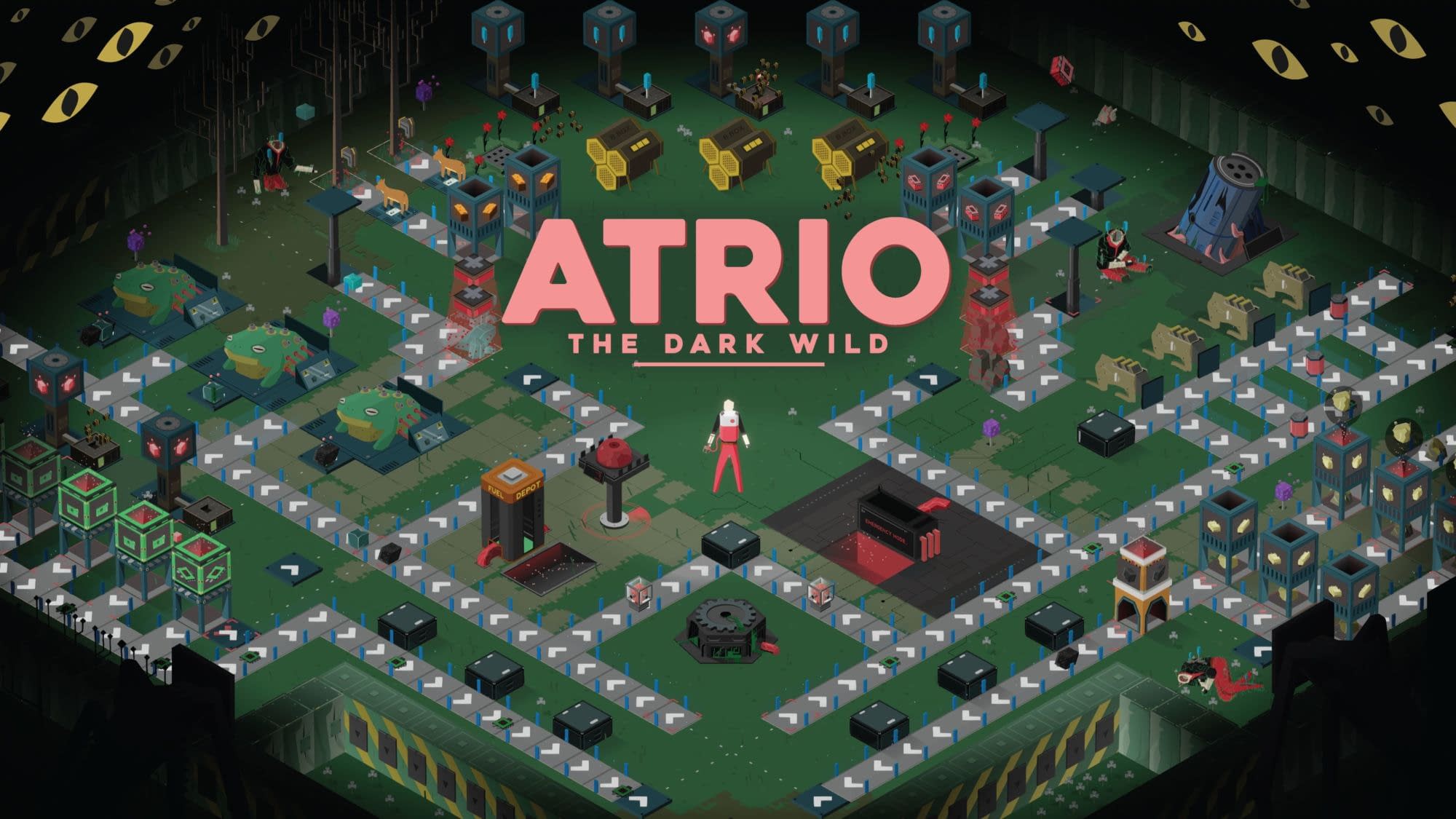
Q: What made you choose the automation simulator genre space for your survival game?
A: Yeah, it’s definitely a survival/automation game. That’s the fundamental descriptor. For us, it was both a monetary and passion decision. I never pretend that we’re not always thinking about money, I don’t like when people are like ‘ah I just do it for the passion.’ To some degree, we’re putting our lives on the line for this, we need to make money. We are a business, and if we don’t make enough money, then we go bankrupt.
A: So, when we started development, we looked at the top genres on Steam at the time and made some predictions of what would be viable in three to four years. We saw some of the highest grossing genres were like, first person shooters, and we said ‘nope! We’re not doing that!’ As a two-person team at the time, making Call of Duty or Valorant was out. We had this idea of doing a battle royale but decided not to. It was a very conscious decision to choose a genre we liked, would sell well, and was possible for a team of two to actually accomplish.
A: Survival and automation games came up a bunch. My thought process was: ‘It kind of sucks when you’re in Don’t Starve and you reach endgame, you’re this master of the world, and you still have to collect rocks. Man, I’ve conquered this world and I still have to go mine.’ Then, you play Factorio, and they just skip that first part. So, I thought we could bridge that gap, which was interesting. You start by surviving, and as you master the world, you can automate more of it. So, it evolved into something a little different.
Q: The tension in games like Factorio and Don’t Starve is already pretty horrifying. What made you lean into the horror aesthetics so much with Atrio?
A: You know what’s weird? I hate horror games. I can’t play horror to save my life. Do you know what it is? A lot of the development process was really planned out, I don’t like flying by the seat of my pants on anything – but the horror stuff just kind of came together. As we were developing it, it just sort of happened.
A: We knew we wanted it to be in the dark, so we could manage power. Then the environment wasn’t very interesting, so we started adding these blinking eyes. After that, it was like, ‘oh, we’ve made a scary game.’ I don’t find it to be scary at all, but, you know, I’m pretty familiar with the creatures.
RELATED: Cloudscape is Stardew Valley Meets Don't Starve
Q: You’ve got some really unique creatures in the game, like the half-beast-half-piston Pushback. What inspires the creature design of mobs like that and the Popbox?
A: It is inspired by my suffering. There was so much time figuring it out. When we started I had all these crap ideas, and no-one liked them, and they were just regular automation pieces. So, these monsters just came from so much iteration. It’s hard to say if it was inspired by anything, more driven by feedback saying, ‘this is generic, this is boring’.
A: There was a point that I realized we need a different hook. Let’s make sure the creatures can be part of the automation system. Let’s make a bridge that links those two together. From that, what the players need in game became the focus of how the creatures function, if that makes sense. It makes the player split resources.

Q: When did the weird giants that drive the main story appear in the game?
A: The story was part of it from the get-go. It was actually meant to be a love story, and that did not happen. I can tell you, that is definitely not in the game. It was meant to be a love story involving those giants, and obviously they looked different back then. It was driven by a visual aesthetic. I wanted the huge monolithic structures the world to break up the flat monotony of an isometric plane. Slowly, over time, I hired an editor (as the love story was pretty bad). After experimenting with all these visual ideas, the giants started appearing in game.
Q: You’ve mentioned before that you’re not an artist by trade. How did you cultivate such a striking art style as a result?
A: I’m going to quote a famous Twitch streamer called Ludwig here. It’s called the ‘Yoink and Twist.”
A: The yoink and twist is the idea of taking something successful from someone else, and twisting it to be your own. I basically scrolled the internet for days to find an art style that hadn’t been made before, and found an artist called Romain Tristram, you can find him on Behance or Artstation. Definitely a professional, I think he’s done things for Mercedes and the Olympics before.
A: I learnt through Disjoint how to adapt to new styles. I’ll take a piece of art that they do, and recreate it as close as I can. That’ll help me understand the structure, rules, and color palettes that they use better than me just doing it on my own.
Q: What can Atrio fans look forward to during the early access phase?
A: Well, the game’s not done at all, so there’s that. The story’s very short right now. We’re intentionally holding the story back a bit so people will come back at 1.0. The thing they can most look forward to is the game being done, in however long the early access takes. For me, that’s the really exciting thing, to have a complete game.
[END]
Atrio: The Dark Wild is out now in early access on Steam and the Epic Games Store
MORE: The Day Before Could Really Benefit from Early Access
